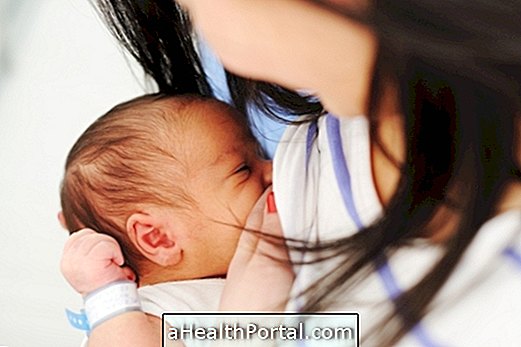An excellent strategy for combating or avoiding ear pain in the airplane is to cover the nose and make a little pressure on the head, forcing the breath. This helps balance the pressure inside and outside the body, allying the bad feeling.
Airplane ear pain arises due to the sudden pressure change that occurs when the aircraft takes off or landing, which can also cause other nuisances such as headache, nose, teeth and stomach, and intestinal malaise. See home remedies to relieve ear pain.
So, here are 5 tips to avoid ear pain:
1. Valsalva method
This is the main maneuver to be done to relieve pain as it helps to balance the inner ear pressure again according to the pressure of the external environment.
To use this method, you should inhale, close your mouth and pinch the nose with your fingers and force the air out, feeling a pressure in the bottom of the throat. However, care must be taken not to push too hard by forcing the air out with a blocked nose, as it may make the pain worse.

2. Use nasal spray
The nasal spray helps release the passage of air between the sinuses and the ear, facilitating rebalancing of internal pressure and avoiding pain.
To have this benefit, you should use the spray half an hour before takeoff or landing, according to the time that most causes discomfort.
3. Chew
Chewing gum or chewing some food also helps balance the pressure in the ear and prevent pain, as well as forcing the movement of the muscles of the face, also stimulate swallowing, which helps to free the ear from the sensation of being capped.
4. Yawning
Properly yawning helps to move the bones and muscles of the face, releasing the auditory tube and favoring pressure regulation.
In children, this technique should be done by encouraging little ones to make faces and imitate animals such as lions and bears, which open wide the mouth during the roar.
Hot compress
Putting a compress or hot swabs on the ear for about 10 minutes helps relieve the pain, and this procedure can be done on the plane by asking the flight crew for a cup of hot water and tissues. As this problem is common among travelers, they will not be surprised at the request and will help ease the discomfort of the passenger.
Also, avoid sleeping during take-off or landing the flight is important to avoid earaches because, in sleep, the process of adaptation to changes in pressure is slower and uncontrolled, making the passenger usually agree with ear pains.
What to do when traveling with babies
Infants and toddlers can not cooperate to use the maneuvers that combine the pain in the ear, so it is common to hear them cry at the beginning and end of the flights.
To help, parents should use strategies such as not letting babies fall asleep at the time of takeoff or landing and give the baby bottle or other food at this time, remembering to avoid lying down so that there is no clogging and more clogging of the ears. See more tips to help the baby here.
What to do when pain does not go away
These strategies should be used again and again until the ear finds the balance of pressure again and the pain passes. However, in some people the pain persists, especially in cases of nasal problems that prevent the good circulation of air in the body, such as colds, flu and sinusitis.
In these cases, the doctor should be consulted before the trip so that he can prescribe medications that clear the nose and relieve the uncomfortable feeling during the flight.
To stay calm, see also how to relieve motion sickness.























